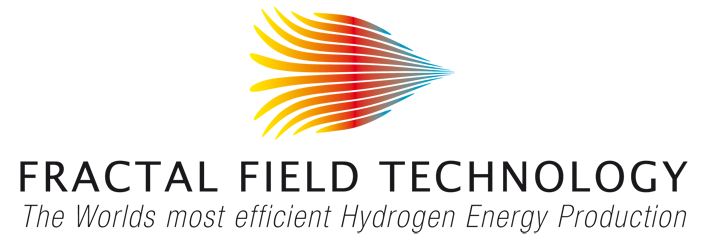
QUANTUM RESONANCE TECHNOLOGY
Directors: Roger Green and Dan Winter
Team: Elizabeth Donovan, Paul Harris, Jean Paul Biberian and several independent contractors
Key features
-
Enhanced Electrolysis and Hydrogen Production
-
A dramatic reduction in that power required to split hydrogen is the core of our hydrogen project
-
Releasing Hydrogen from water, more efficiently, by using the new precise equation for the newly discovered accurate wavelength and frequency harmonic series of hydrogen.
In this document
Overview and Introduction to key concepts
Benchmarks and experiment direction
Strategies for marketplace entry
Budget and Investment proposal
Overview
We are cracking the hydrogen code to liberate hydrogen from water at a much lower input energy, opening the way to the hydrogen economy.
Releasing Hydrogen from water by using the new precise equations for the accurate 'wavelength’ and ‘frequency harmonic series’ of hydrogen. A dramatic reduction in power to split hydrogen is the core of our hydrogen golden ratio project. The only power in our system is the amplifier to generate the key "singing note" frequency series we feed to the hydrolysis plates.
The “Breakthru” in proof of the fractality of the hydrogen structure allows us to optimize these frequency recipes. Our technology precisely accounts for this phenomenon and allows a more powerful and direct approach to tuning hydrolysis and hydrogen energy production. This will revolutionize the leap into ‘energy from water’.
Unique approach to Hydrogen production
The Golden Ratio Hydrogen Energy Technology is centered on the discovery and proof of the key frequency recipes, which efficiently facilitates the splitting of hydrogen from water. New groundbreaking research by Dan Winter has empirically derived precise frequency packets based on Planck, Golden Ratio and hydrogen atom diameters to separate hydrogen from water in a more efficient and lower energy cost than is currently possible. We use a unique frequency signature treatment of hydrogen which creates an “implosive hydrolysis” to manufacture Hydrogen from water. These ‘implosive hydrogen’ frequency patterns make it possible to revolutionize hydrolysis thus providing for the world’s clean energy needs from water.
The new equations involve amplitude and frequency through time, which ‘ring’ the hydrogen atom. Instead of broadly slamming the water molecule with an offset voltage for hydrolysis - the applied voltage is specifically applied in a process that coaxes the hydrogen atom off the water molecule. For example, this is rather like getting a singer on precisely the right pitch to break a glass. In this case, to use the analogy, the glass is the precise bond geometry of hydrogen.
The Golden ratio, which appears in the geometry of a variety of creations in Nature, is found to arise right in the Bohr radius of the hydrogen atom due to the opposite charges of the electron and proton. The bond length of the hydrogen molecule is the diagonal of a square on the Bohr radius and hence also has two Golden sections, which form the cationic and anionic radii of hydrogen. It is shown that these radii account quantitatively for the bond lengths of many hydrides and can be used to demonstrate the atomic and golden ratio based ionic radii of many other atoms.
The Golden Ratio presence is seen in both the biological and astronomical realms and recently in the quantum mechanical and physical realms. In the biological realm, the number Phi can be seen in both Phyllotaxis and DNA. In the astronomical realm, its presence is found in the spiral structures of galaxies. In physics, Phi can now be related to the g-factors of the electron, proton and neutron.
"It has now been established that the most basic chemical bond in the Universe, the hydrogen bond is Golden Ratio and the Universe is 90% hydrogen. It is not surprising that the Universe is shaped like a Dodecahedron and that the Golden Ratio is present in all things."
-Dr. Patrick Flanagan in reference to Dan Winters invention
“Dan Winter’s calculation of the Kanzius frequency of 13.56 MHz using the Planck time and the power of golden ratio. It just doesn't get better than this!! Case closed for the validity of the Kanzius work. Your idea when put through the rigorous mathematical test holds water for the Kanzius results too!! What a gold mine!”
–Dr. Sal Giandinoto, PhD
Strategies for marketplace entry
Commercial Applications: This approach well result in a drastic reduction in the power or wattage required for splitting hydrogen from water. This means virtually unlimited energy from water on demand. The commercial possibilities are obviously planetary, revolutionary, carbon neutral, renewable and profitable.
Current technology in the world: The average energy required to produce 1 cubic meter of hydrogen through electrolysis is 4 kWh.
Golden Ratio Hydrogen Energy Technology: It will be possible to develop a technology where electricity consumption is only 1 kWh (or much less) per 1 hydrogen gas cubic meter, enabling our hydrogen production to become a leading ‘energy efficient’ carrier.
Electricity generation, anywhere - anytime: Municipal, off grid, third world, medium scale for factories, buildings, business, home use / home fueling solutions, Military and NGO groups could use these mobile, high output hydrogen generators to supply power shortly after a disaster.
Tar Sands Oil separation: The cheap and efficient use of burning hydrogen from water can be used for the massive amount of energy required to separate oil from tar sands, rather than the methane presently used.
Waste Disposal: The cheap energy in-put and high heat from our Hydrogen project will revolutionize waste disposal systems.
Desalination: The cheap energy in-put and high heat from our Hydrogen project will revolutionize desalination systems.
Transport: The push towards hydrogen powered and fuel cell cars, especially from Mercedes, BMW, and Toyota and Tesla etc. Hydrogen production inserted into cars, trucks, trains and shipping will be a huge market in the years to come. Military, NATO, non-governmental service agencies are moving to non-fossil fuel vehicles that can be refueled from local sources and which are non-polluting. Companies with large commercial fleets; taxis, delivery services, short and long haul trucking could use large industrial units to generate large quantities of hydrogen that could supply hydrogen at a much lower cost.
With our Golden Ratio Hydrogen Energy Technology, hydrogen can be generated for a much lower price per liter equivalent
Scope of the Experiments and benchmarks
-
We will be building a RF fractal wave antenna to trigger an efficient burning flame (hydrolysis) from cool water.
-
The key success to our most efficient Hydrogen production is the 'circularly polarized' (Longitudinal RF) impedance matched RF antenna.
-
We need to experiment with various impedance matches and the right design longitudinal antenna.
-
The proof of concept will show a very modest amount if RF power will trigger large scale hydrolysis
-
The underlining principle is precise phase conjugation to Planck length using our unique formulae’s.
-
We are the worlds experts in longitudinal technology and have already entered the marketplace with the Theraphi Wellness Technology
To prove or disprove the feasibility of non-contact electrolysis using saline and radio-frequency energy including the feasibility of a modified water-capacitor using electrodes coated with High-K dielectric material. Another part of the experiment will be to drive the capacitor in a resonance mode using a known inductor in a modified tank circuit.
Description: A vessel is constructed containing two concentric electrodes coated with an epoxy resin containing a dielectric material such as Barium Titanate. Leads to the electrodes are coated with a protective resin to prevent degradation in the acidic environment of the reaction vessel. A linear amplifier is selected with a power capacity of up to 1000 watts, and a frequency ceiling of 50 MHz. Once the capacitance of the device is determined, an appropriate inductor is selected, with a tunable core for frequency tracking, and adapting to any variance in capacitance of the vessel in operation. Either a function generator or PC is used in generating the desired waveforms, and the voltage is raised to the dielectric breakdown potential of the solution. The solution is preferably tap water with low turbidity, and average mineral content. A series of sweep frequencies are used as well as various modulations. Due to the geometry of the electrode/antennas, polarizations are limited to either vertical or longitudinal, with the latter generated by the high-K dielectric coating. Efficiency will be measured with the calorimetry method measuring the volume of combustible gas, and comparing this to the input wattage of the LCR circuit. Adjustments to the LCR will be made to maximize the Q and minimize the dielectric heating effects on the solution. The endurance testing phase will observe the effects of the H+ loading of the solution driving the PH downward affecting the materials of the vessel. If the resin used to disperse the dielectric material on the electrode/antennas is sufficiently stable, the solution will remain usable with only periodic back flushes necessary to remove mineralization and precipitates. If needed, a chemically-resistant backflush valve will be installed in the sump of the device to facilitate this. The gas volume produced will be measured with either a gravity ball or mass flow gauge, and confirmed using the inverted beaker method.
Implications: No one thus far has used LCR tank electrolysis with usable volumes. If this attempt is successful, it will result in a significant increase in efficiency for HHO electrolysis. This system, since it is AC as opposed to modulated DC waveforms of Puharich, Kanzius and Meyer, will be a departure from those previous configurations. It promises to address the issues of electrode degradation, and pollution of the medium undergoing electrolysis. It also solves the problem of acidic wear and contact corrosion from H+ loading.
Testing and validation 1: We propose to apply this to redesign the concentric tubes of a phase conjugate columnar capacitor for both radii and KEY FREQUENCY SIGNATURE and by spectrum analysis accurately tune the capacitance and perfect the field to 'ring' hydrogen from water.
Testing and validation 2: Expose the water thin film surface to sufficient power in the rf AT the critical frequency. The rf antenna must be 'circularly polarized' - meaning longitudinal emf radiance. Both approaches and benchmarks will fully prove the principle:
efficiency achieved by tuned fractal phase conjugation to Planck length, producing the cheapest available hydrogen source from water feedstock.
Budget and Investment Proposal
Investment overview: To develop through our R and D benchmarks, test and independently validate, and to commercialize and license. We are interested in serious investment to move forward this unique invention and to further the testing, validation and commercialization.
Business Summary: This discovery opens the way for electricity generators that run on hydrogen fuel which uses water as a feedstock. This is a unique approach and has global potential to quickly enter the marketplace that is desperate for a clean non-fossil source of energy. It is scalable to any dimension. It has a broad spectrum of other applications- namely transport, waste management and desalination.
The theoretical work is done. The team is built. We know the frequency recipe and the correct benchmarks to get this completed.
Previous investment has been $124,000, through the company directors.
Investment enquires

Contact: Roger Green
E-mail: [email protected]
USA phone 848 702 3779
Skype conference calls are available with Dan Winter and Roger Green to discuss and explain our R and D, budget and investment. Email for an appointment.

